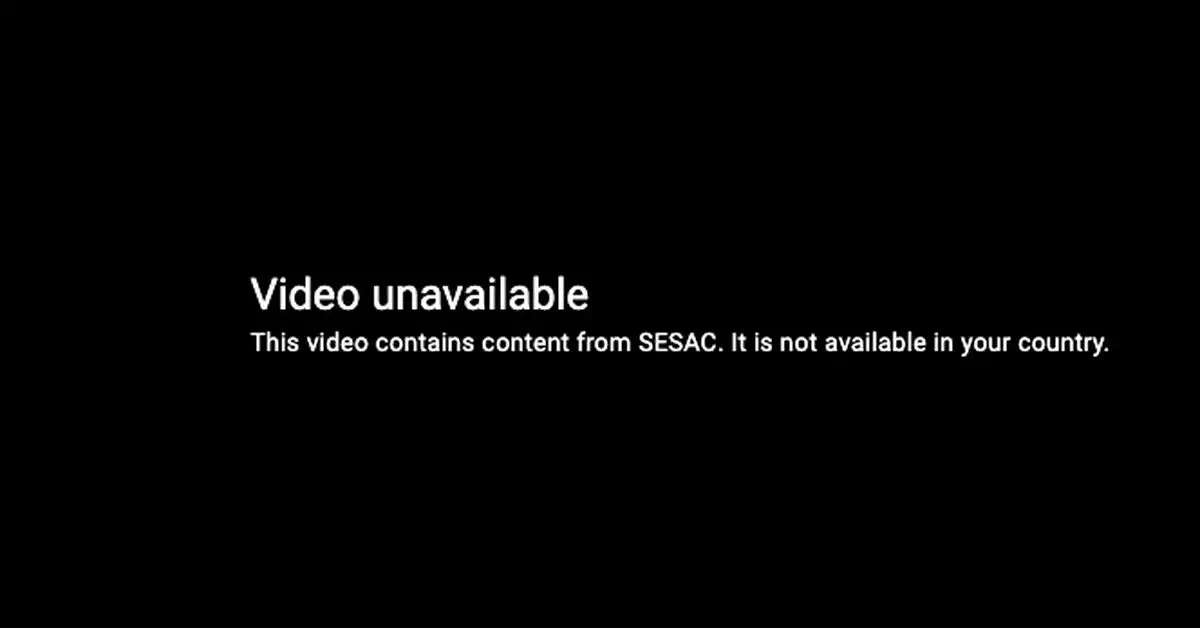In a startling turn of events, music fans were greeted on Saturday with a frustratingly familiar message: “Video unavailable. This video contains content from SESAC. It is not available in your country.” Such notifications greeted viewers hoping to immerse themselves in the rhythms of renowned artists like Adele, Kendrick Lamar, and Britney Spears. This unexpected disruption in streaming led many to question the identity of SESAC and the potential duration of this interruption.
SESAC, an acronym for the Society of European Stage Authors and Composers, has been a significant presence in the music licensing arena since its inception in 1930. Representing over 15,000 affiliated songwriters and composers, SESAC is responsible for overseeing the public performance rights for a staggering 1.5 million songs. Although smaller in scale compared to its alignments, such as BMI and ASCAP, SESAC boasts an impressive portfolio that includes some of the biggest names in the music industry. Its acquisition by the private equity giant Blackstone in 2017 raised eyebrows and sparked discussions about the future direction of the organization and its impact on licensing agreements.
The sudden unavailability of tracks from influential artists has sent ripples across the digital landscape, inciting both confusion and frustration among fans. The availability of music is vital for artists’ reach and revenue, and losing access to platforms as significant as YouTube can hamper their visibility. Furthermore, the ambiguity of which songs are included in the ban complicates matters. While certain tracks by artists like Kanye West are removed, others remain accessible. This inconsistency raises critical questions about the effectiveness of SESAC’s licensing management and communication strategy.
The dialogue between YouTube and SESAC appears to be ongoing, marked by efforts from both parties to come to an agreement regarding licensing rights. A YouTube spokesperson indicated that discussions were in progress to negotiate the renewal of their existing deal with SESAC. The message resonated with a commitment to copyright enforcement, but it also highlighted the complexities surrounding content ownership in an ever-evolving digital music landscape. As SESAC continues to wield its influence in the industry, both listeners and artists await a resolution that reinstates their access to beloved tracks.
This incident is emblematic of the significant ongoing challenges faced by the music industry regarding streaming rights and content availability. As digital platforms evolve, organizations like SESAC must navigate complex landscapes of licensing, negotiations, and evolving audience expectations. This situation stands as a reminder that while technology advances, the foundational issues of copyright and fair compensation remain pertinent.
As artists and fans alike search for clarity amid the chaotic backdrop of music availability, the hope for a swift resolution lingers. The continued discussions between YouTube and SESAC might pave the way for the eventual return of a vast array of music to the platform. With music serving as a universal language, it is paramount that such access be preserved for all, ensuring that artists can share their creations with the world seamlessly. In this age of digital consumption, it remains crucial that all parties find a balanced path forward that respects both the rights of creators and the desires of listeners.


Leave a Reply